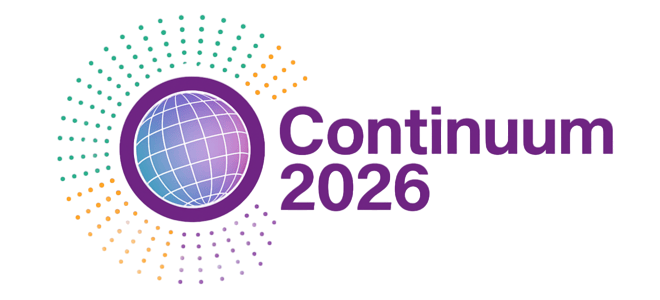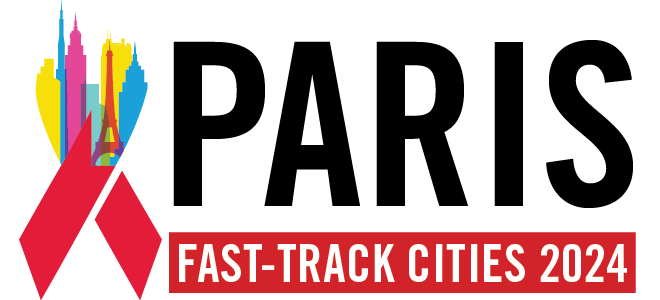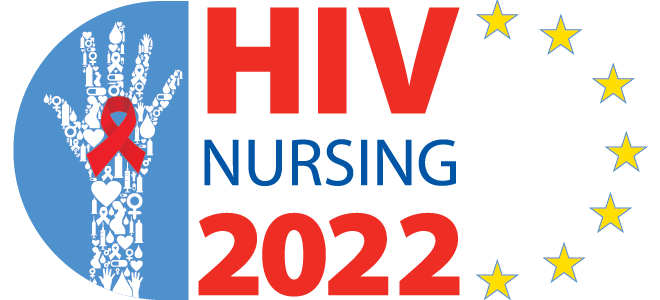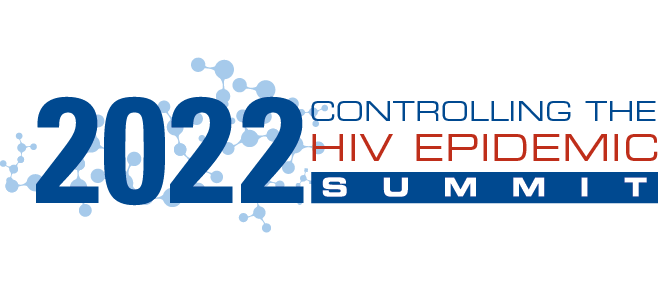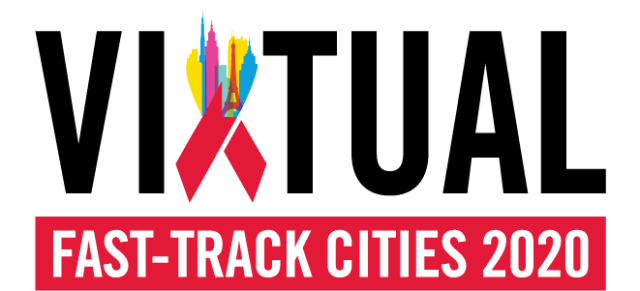
Virtual Fast-Track Cities 2020
Conference Report
Introduction
In the seventh month of the COVID-19 pandemic, which has presented the most unprecedented public health, economic, and social challenges in modern times, more than 1,400 delegates from 410 cities and municipalities convened September 9-10, 2020, for the Virtual Fast-Track Cities 2020 conference. Sponsored by the International Association of Providers of AIDS Care (IAPAC), in collaboration with the Joint United Nations Programme on HIV/AIDS, the virtual conference replaced a scheduled in-person gathering in Lisbon of cities and municipalities that are signatories to the Paris Declaration on Fast-Track Cities Ending the HIV Epidemic. The conference, a sequel to the inaugural Fast-Track Cities 2019 conference in London, was designed to foster peer-to-peer best practice-sharing among the various constituencies engaged in accelerating their urban HIV, tuberculosis, and viral hepatitis responses.
Created on World AIDS Day 2014 with an original 26 cities and municipalities, the Fast-Track Cities network has since expanded to more than 300 cities and municipalities worldwide working to achieve the UNAIDS HIV 90-90-90 programmatic targets, the Stop TB Partnerships 90-(90)-90 targets, and hepatitis B virus (HBV) and hepatitis C virus (HCV) elimination targets set by the World Health Organization (WHO). Fast-Track Cities have recognized that ending the epidemics of HIV, TB, HBV, and HCV requires sustained leadership from affected communities, Mayors and other municipal leaders, as well as urban-focused, data-driven, equity-based strategies that place people at the center of the public health responses, including in relation to COVID-19.
Table 1. Fast-Track Cities Programmatic Targets
HIV 90-90-901
- 90% of people living with HIV (PLHIV) know their status
- 90% of PLHIV who know their status are on antiretroviral therapy (ART)
- 90% of PLHIV who know their status and are on ART are virally suppressed
TB 90-(90)-902
- 90% of all people with TB on treatment (first- and second-line or preventative)
- 90% of key populations with diagnosed TB on treatment
- 90% of all people diagnosed with TB achieving treatment success
HBV 90-903
- 90% vaccine birth dose
- 90% 3-dose vaccine coverage in infancy
HCV 90-80-953
- 90% of people with HCV infection know their status
- 80% of people with HCV infection know their status on treatment
- 95% of people with HCV infection on treatment achieving cure
Sources: 1) UNAIDS, 2) Stop TB Partnership, 3) WHO
Fast-Track Cities are leveraging lessons learned as they work towards attaining and surpassing the HIV, TB, HBV, and HCV targets on a trajectory towards achieving Sustainable Development Goal (SDG) 3.3 of ending the HIV and TB epidemics, as well as the WHO’s HBV and HCV elimination goals, by 2030.
Dr. José M. Zuniga, IAPAC’s President/CEO, opened the Virtual Fast-Track Cities 2020 conference with a moment of silence to honor the 897,833 people who had lost their lives to COVID-19 as of September 9, 2020, as well as by expressing gratitude to health care personnel and other essential workers on the frontline of the COVID-19 response. Much of the conference was centered on how cities and municipalities were adapting to maintain a continuity of HIV and other health services during the COVID-19 pandemic, which precipitated an extended interruption of many in-person health services, making accessibility and utilization particularly onerous given physical distancing and other public health measures aimed at mitigating the spread of the SARS coronavirus 2 (SARS CoV-2). COVID-19 presented unique risks and challenges to people living with HIV, TB, and viral hepatitis, increasing the need for support even as accessing such support became difficult. Finally, the conference addressed how Fast-Track Cities can continue to make progress towards time-delimited public health goals both during and after the COVID-19 pandemic, which not only threatened to distract the public health community from the ongoing importance of ending much more mature pandemics, such as the four decade-long HIV pandemic, but also could pose complications for funding robust responses to infectious and other diseases.
This conference report is organized thematically to encapsulate both live-streamed sessions that took place September 9-19, 2020, as well as pre-conference sessions that helped to further frame the Virtual Fast-Track Cities 2020 conference. Among the conference themes included the concept of “city multilateralism” within the context of public health (a topic that Dr. Zuniga focused upon to open the conference); an overview of COVID-19’s relationship to and impact on HIV and other health efforts around the world; sessions on how to ensure the uninterrupted provision of the full continuum of HIV prevention, care, treatment, and support during the COVID-19 pandemic and during future public health crises; and discussion about combatting stigma and discrimination perpetrated against people living with HIV and co-morbid diseases which has been exacerbated, among certain key populations, during the COVID-19 pandemic. The report then pivots to covering sessions sponsored by Gilead Sciences and ViiV Healthcare, as well as a series of city and municipal case studies illustrating best practices across four geographic regions. Finally, the report concludes with an overview of the conference’s closing panel, “Implementing Mitigation Strategies to Protect Hard-Won Gains in HIV, TB, and HCV Responses,” and a conclusion that speaks to the resilient nature of Fast-Track Cities.
Supporting “City Multilateralism” to End Urban HIV, TB, and HCV Epidemics
IAPAC’s Dr. Zuniga opened the Virtual Fast-Track Cities 2020 conference focusing on the concept of “city multilateralism,” which describes diplomacy and action at the local level to coordinate with global peers on transnational concerns. Numerous urban initiatives populate the sustainable development firmament, all striving to make real the aspirations reflected in the SDGs and the New Urban Agenda. These efforts serve also to link local governments with national and global efforts, which is key not only for the SDGs but also – as the world witnessed in 2020 with the burgeoning COVID-19 pandemic – emerging pandemic preparedness and responses.
City multilateralism is an addition to national health diplomacy rather than a replacement. It requires wide-scale decentralization of the traditional health diplomacy model with nation-states as central actors, and an actioning of city multilateralism as a national-urban partnership. City multilateralism is also a way of mitigating harm done when nation-states fail to lead. With the United Nations estimating that two in three individuals will reside in urban areas 30 years from today, the concept of city multilateralism will only grow more important in time.
Dr. Zuniga noted that the Fast-Track Cities initiative is an example of city multilateralism at work, and “one that shows how national leaders can support the innovative public health work that cities and municipalities are advancing. Countries ranging from Brazil to South Africa to the United States now have a critical mass of Fast-Track Cities that are actioning the power of city multilateralism and local public health leadership to achieve positive HIV and other health outcomes at urban and national levels, monitored through the transparent use of granular programmatic data.”
For those working to advance public health, urbanization presents myriad risks. Urban growth over the past 20 years has been marked by growing inequality, with three out of four urban areas having grown more unequal, which is troubling considering the urban growth that lies ahead. Additionally, the human cost of endemic infectious diseases and global pandemics reflects an existential threat these hazards pose to communities worldwide, with the greatest devastation wrought in urban centers. For example, 90% of COVID-19 cases between January 2020 and June 2020 were in urban areas. With respect to HIV, in many countries, a single city or municipality accounts for 40% or more of all diagnoses. In Europe, 60% of PLHIV reside in 20 cities, and, in sub-Saharan Africa, most countries already have higher HIV prevalence in urban areas versus rural areas, with many having double the prevalence or higher. These trends will only increase with urban growth.
“Yet, with these public health risks also come opportunities, because cities and municipalities are playing an ever more important role in public health,” explained Dr. Zuniga. “Already, today, city and municipal leaders are actively seeking greater representation at the global table, recognizing that healthy, resilient societies require realizing a ‘right to the city’ that asserts a city as a place that strives to guarantee a decent and full life for all of its inhabitants.”
HIV 90-90-90 Targets: Metrics of Success
Dr. Zuniga cited the following three Fast-Track Cities as examples of what city multilateralism can achieve in collaboration with national governments.
• BANGKOK, THAILAND
From 2016 to 2018, the percentage of PLHIV in Bangkok who knew their HIV status rose from 79% to 91%; the percentage of PLHIV on ART rose from 57% to 70%; and the percentage of PLHIV on ART achieving viral suppression remained mostly stable even as the number of those on ART grew.
This progress – double-digit percentage point improvements in relation to the first and second 90 targets – would not have been possible without increased domestic funding for key population-led organizations and an approved budget to provide ART to undocumented migrants and non-Thai residents.
• KYIV, UKRAINE
Kyiv, in contrast, is an example of a city that faced some initial challenges in its partnership with the national government of the Ukraine, but nonetheless found a way to leverage that partnership to make significant progress against the HIV 90-90-90 targets. The number of PLHIV who knew their status increased significantly between 2015 and 2019, as did viral suppression rates, which in 2018 exceeded their 90% goal. Moreover, the most progress of all has been made in ensuring that people who are diagnosed with HIV are on ART. In just four years, that percentage has increased from <50% to quickly approaching the 90% target.
Here, too, the double-digit percentage point improvements across all three 90 targets would not be possible without some partnerships with the national government and multilateral agencies, including through a National HIV Testing Strategy for 2019-2030, or and a 130% increase in the budget allocated for antiretroviral (ARV) drug provision made possible through support from the US President’s Emergency Plan for AIDS Relief (PEPFAR).
• NAIROBI CITY COUNTY, KENYA
Finally, through a successful national-urban partnership, Nairobi CITY County and the national government of Kenya facilitated significant progress in relation to the third 90 target, specifically with the percentage of PLHIV on ART who achieved viral suppression, which increased from 55% to 82% in just two years.
Key to this life-saving success, beyond significant investments made by PEPFAR and the Global Fund to Fight AIDS, Tuberculosis, and Malaria (Global Fund), was an alignment between the National AIDS Strategy and the Nairobi City County Accelerated HIV Response Plan. Of almost equal importance was the roll-out of an improved national electronic medical record (EMR) system for better data management, with granular data used as a metric of success to garner increased political support and financial resources at national and municipal levels.
City Multilateralism and COVID-19
Excerpt from Dr. Zuniga’s opening remarks at the Virtual Fast-Track Cities 2020 conference:
“The COVID-19 pandemic has revealed that increased globalization over the past several decades has unfortunately not meant increased global strength on addressing public health crises. To the contrary, the COVID-19 pandemic seems to indicate that we have only ‘globalized’ our vulnerability to endemic infectious diseases to an extreme degree. The pandemic has revealed several key lessons for understanding city multilateralism and how it can advance the global public health agenda.
First, the pandemic has shown us the enormous human and financial costs of endemic infectious diseases. Beyond the direct impact on health and tragic loss of life, the United Nations Development Programme (UNDP) estimates that 40-60 million people around the world will be pushed into extreme poverty because of COVID-19; 1.6 billion informal workers will lose 60% of their income; and 265 million people in low- and middle-income countries are facing acute food insecurity this year. Additionally, the World Bank predicts an unprecedented number of countries will face economic recessions this year. Only East Asia and the Pacific are projected to experience economic growth, but at only 0.5%. Economies elsewhere in the world will all contract, including a 2.7% decline in South Asia, a 2.8% dip in sub-Saharan Africa, a 4.2% drop in the Middle East and North Africa, and a 7.2% decline in Latin America.
Second, COVID-19 has revealed a lack of pandemic preparedness on a global level, which is due in part to the binding but unenforceable International Health Regulations (IHRs). In 2019, the average self-reported core capacity in relation to national health emergency frameworks ranged from a low of 40% in the African region and 58% in the Southeast Asian region, to a high of 75% in the Western Pacific region. Risk communication – one of the most important core areas for addressing the COVID-19 pandemic – is also one of the poorest self-reported areas, with a global 60% average score.
Moreover, a recent analysis looked at the Emergency Committees that the WHO assigned to address nine Public Health Emergencies of International Concern, including COVID-19. That analysis found that the Emergency Committees used the IHRs vaguely and inconsistently, and that guidelines were needed to ensure standardized interpretation. Only days prior to the Virtual Fast-Track Cities 2020 conference, the WHO convened a review committee to evaluate how the IHRs have performed during the COVID-19 crisis and to discuss potential amendments, and public health experts convened at the UNITE Summit about a new Global Convention on Public Health Security in the 21st Century.
Third, COVID-19 has revealed fragility in HIV and other health responses, for example, with respect to TB and viral hepatitis. The infrastructure developed in response to more mature pandemics such as HIV and TB was leveraged to respond to COVID-19, as was the HIV workforce. An IAPAC survey fielded from April 2020-June 2020 found that 53% of clinician-respondents from 75 countries were treating patients with COVID-19. Survey respondents also reported disruptions in HIV services during the pandemic, with 46% reporting disruptions in laboratory monitoring of viral load, for example, and 45% reporting disruptions in trauma-informed mental health care.
While there have been many innovations to address these challenges – for example, the use of telemedicine and multi-month ART dispensing – these innovations are not altogether attenuating levels of concern shared among HIV response experts, including at UNAIDS and WHO. For example, in South Africa, 93% of respondents were “moderately” to “very” concerned about ART adherence, while 92% of provider respondents in the UK were equally concerned about mental healthcare access. There must be sustained investment in local, national, and international HIV, TB, and other health responses, despite divided attention and strained budgets, to get back on the fast-track towards SDG 3.3. But we also need to see long-term efforts to address the underlying fragility that the COVID-19 pandemic has revealed in the HIV response, and to ensure a continuity of HIV and other health services in the months and years to come.
Finally, COVID-19 has revealed how city multilateralism functions in the face of divergent regional and national policies during public health crises. In Atlanta, Mayor Keisha Lance Bottoms has from the start of the COVID-19 pandemic coordinated with the state government, but also with the US Centers for Disease Control and Prevention (CDC). Mayor Bottoms followed guidelines set by the CDC as well as WHO in closing schools and businesses, as well as requiring face masks in certain public spaces. And she has persisted despite some confusing and highly politicized guidance coming out of the US federal government, but also serious pushback from her State’s governor.
Similarly, São Paulo began to see a surge of cases early in the global COVID-19 pandemic, particularly in the favelas. Municipal and state leaders took swift action and worked with the medical community to prepare hospitals for the coming wave of COVID-19 cases. Municipal health authorities cancelled elective surgeries, expanded intensive care units (ICUs), and acquired personal protective equipment (PPE)supplies, even as prices skyrocketed with no federal support. While state Governors did a lot more than Brazil’s President to implement evidence-based public health measures, much of the decision-making and action-taking was still delegated to São Paulo Mayor Bruno Covas and the Mayors of other large Brazilian municipalities to combat their urban COVID-19 epidemics. Much of the responsibility was also left to Mayors to decide when and how to begin reopening their municipalities.
Decentralizing Diplomacy and Building Partnerships
City multilateralism does not mean replacing traditional health diplomacy in which nation-states are central actors, but rather means accepting and supporting the vast decentralization that has already begun organically (for example, with respect to COVID-19 across the Fast-Track Cities network). Creating sustainable cities and municipalities (SDG 11) is interwoven with virtually every other SDG, including SDG 3. Progress cannot be made across the SDGs without seeing significant support for cities and municipalities from national and international bodies, and cities and municipalities cannot be expected to act in isolation.
There are several key roles for national governments to play in this work. The first is to avoid obstructing progress at city and municipal levels, as we have seen in the examples already discussed from the United States and Brazil. This dynamic has also been true with respect to HIV. For example, we can contrast the experiences of Fast-Track Cities such as Bangkok, Kyiv, and Nairobi City County, all of which have received strong support from their national governments, with other cities and municipalities that have encountered resistance.
Second, national governments must work with cities and municipalities to implement emergency and long-term public health measures. If challenges with the IHRs include interpretation and enforceability, then improving the viability of the IHRs will require national-urban partnerships for successful management of public health emergencies. COVID-19 has also revealed the need for collaboration around risk communication, human resources, reaching vulnerable populations, and providing the full continuum of HIV (and all forms of) care with minimized contact when such contact becomes inadvisable.
Finally, addressing social determinants of health is a critical way in which cities and municipalities are meeting the immediate needs of people who are living with HIV or who have been impacted by COVID-19. Take, for example, housing. Adequate, stable housing is central to all of us, but notably to people living with HIV. We now also see it as essential to curbing the spread of COVID-19. And yet, the COVID-19 pandemic has made it harder to maintain stable housing. Cities and municipalities are the best possible actors to ensure that local populations have access to safe and affordable housing. Leaders at the city and municipal levels must be thinking about how to secure stable housing for people living with HIV, throughout and beyond the current crisis.
An Urban Call to Action
In the midst of the public health crisis that COVID-19 represents, there is a clear necessity for cities and municipalities to be on the forefront of advancing public health and protecting basic human rights. It is no longer acceptable to relegate urban leaders to the sidelines, as a mere afterthought in health diplomacy, and then expect them to play a central role in preventing and containing epidemics or pandemics. This has been true for decades with epidemics such as HIV and TB. Today, it has come into even sharper focus with COVID-19.
We need city multilateralism so that fast-growing urban zones – poised to become more populous in the decades to come – can serve as engines for change and innovation to end the HIV, TB, and viral hepatitis epidemics, as well as tackle future emerging diseases. However, facilitating this aim will require that national leaders fulfill their critical role in seeing city multilateralism as an opportunity rather than competition to be hindered. It will also call for changes at the international level, such as making the IHRs enforceable and engaging city and municipal governments in this work.”
COVID-19 and Public Health Devolution: Confronting Transnational Crises at The Urban Level
In opening the Virtual Fast-Track Cities 2020 conference, IAPAC’s Dr. Zuniga joined Mayor Fernando Medina in welcoming delegates to a conference that was originally set to take place in Lisbon, Portugal, before the COVID-19 pandemic pushed the event to happen virtually. From that welcome message, Mayor Medina and Dr. Zuniga moderated a dual-session panel discussion with the Mayors of five other Fast-Track Cities, asking them to address how were they addressing the COVID-19 pandemic in their cities and municipalities.
Mayor Keisha Lance Bottoms of Atlanta, Georgia, USA, said that the COVID-19 pandemic had revealed the numerous disparities that existed in her city of more than 5.8 million citizens. As has been seen in many countries around the world, communities of color are more susceptible to COVID-19, have worse health outcomes, and have also been harder hit by the economic impact when cities and municipalities shut down to slow their COVID-19 epidemics. Specifically regarding the United States, Mayor Bottoms cited the lack of coordination among the states and with the federal government as a major challenge to addressing the pandemic at the local level. In addition to Mayor Bottoms’ public health leadership, which was at times at odds with her state’s Governor, the city’s chief medical officer – put in place primarily to address HIV – assumed a coordinating role in Atlanta’s COVID-19 response. Mayor Bottoms discussed the strain that the pandemic has put on other health care services, including HIV, but noted that herculean efforts were being advanced by local stakeholders to maintain a continuity of HIV and other health services.
Mayor Mxolisi Kaunda of eThekwini, South Africa, said his municipality of more than 3.1 million citizens had become a regional epicenter of the COVID-19 pandemic. The municipality went into a full lockdown on March 27, 2020, which applied to all but essential services and had a significant impact on the economy, especially manufacturing and tourism. However, Mayor Kaunda noted that South Africa has been a model of national-municipal cooperation against COVID-19. For example, using a district development model, two Deputy Ministers from the national government were assigned to assist the eThekwini municipal government in its COVID-19 response. A member of the municipality’s Executive Council also ensures alignment with policies and measures at the provincial and national levels. While eThekwini was in a second level lockdown as of September 2020, Mayor Kaunda indicated that the municipality had resumed many HIV services, including outreach and prevention, and had furthermore continued tracking 90-90-90 and other data to avoid losing momentum in its HIV response during the COVID-19 pandemic.
Mayor Josefina G. Belmonte of Quezon City, Philippines, discussed her city’s campaign to get to zero new HIV infections by 2030, which included public messaging, capacity-building for clinical facilities, and amending the city’s HIV ordinance to (among other measures) improve multi-sectoral participation for ending HIV and lower the minimum age for HIV testing to 15. Progress on ending HIV largely halted in January 2020 when Quezon City, with a population of more than 2.9 million, began to be affected by COVID-19; a strict lockdown ran from March through May 2020, and a more relaxed lockdown was still in place as of September 2020. According to Mayor Belmonte, one of the city’s first actions during its initial SARS-CoV-2 outbreak was to pass an anti-discrimination ordinance for those affected by (and working to address) COVID-19. The city’s health department conducted robust contact tracing, offered community-based and mobile COVID-19 testing, and allowed individuals to anonymously self-report – striking a contrast with the national government’s “punishment-oriented tactics.” As of September 2020, Quezon City was taking steps to resume their Getting to Zero campaign, offer virtual HIV peer counseling, and resume a focus on data for care, including around the 90-90-90 targets.
Finally, Mayor Geoff Makhubo of Johannesburg, South Africa, said that his city of more than 5.7 million citizens went on lockdown in early March 2020 but has seen cases increase since restrictive measures were eased. He also noted that COVID-19 cases had also moved from being geographically located in wealthier areas at first to poorer areas of the city as the pandemic unfolded. Echoing the sentiment expressed by Atlanta’s Mayor, he said that Johannesburg’s COVID-19 epidemic had exacerbated inequalities in the city and required action to address issues such as food insecurity experienced by vulnerable populations. The city also worked to ensure that all municipal services continued despite the strains imposed by the pandemic. Mayor Makhubo noted that in September 2020 many of his citizens had also stopped accessing HIV services (as well as services for other health conditions beyond HIV and COVID-19), and he predicted that a surge in need was on the horizon, requiring a coordinated effort to regain momentum in the HIV and other health responses.
Overview of COVID-19 and HIV
COVID-19: Public Health and Scientific Challenges
Anthony Fauci, Director of the National Institutes of Allergy Infectious Diseases (NIAID) at the National Institutes of Health (NIH), presented the Virtual Fast-Track Cities 2020 conference’s keynote address, entitled “COVID-19: Public Health and Scientific Challenges.”
In a state-of-the-science presentation, Dr. Fauci explained that there are three main subgroups of coronaviruses: alpha, beta, and delta. The virus that is causing the current global COVID-19 pandemic is SARS CoV-2, and the disease that this virus causes is COVID-19. SARS CoV-2 is a beta-virus. He noted that there have been two other major coronavirus outbreaks in humans, the Severe Acute Respiratory Syndrome (SARS) outbreak in 2002-2003 and the Middle East Respiratory Syndrome (MERS) outbreak which started in 2012 and remains in circulation in camels in the Middle East.
With regard to its natural history, Dr. Fauci indicated that asymptomatic SARS-CoV-2 infection occurs in 40%-45% of individuals and that modelling estimates that individuals without symptoms account for more than 50% of transmissions. Risk factors include older age and certain underlying medical conditions. In the United States, African Americans are dying at 2.4 times the rate of White people. In addition to acute infection, which may be mild, moderate, severe, or critical, Dr. Fauci noted that COVID-19 “long haulers” may experience long-term neurological and other effects from the virus. Citing the evidence as of September 2020, he added that that HIV did not seem to increase the risk for acquisition or affect disease course or outcomes.
Dr. Fauci also addressed the mainstays of treatment as of September 2020 – the antiviral drug remdesivir and corticosteroids. He also marveled at an ongoing unprecedented multinational collaboration to develop safe and effective vaccines that can be delivered at scale globally.
HIV and SARS-CoV-2: What Have We Learned?
IAPAC’s Vice President/Chief Medical Officer, Chris Duncombe, summarized the lessons learned from the HIV and SARS-CoV-2 coinfection case series. In doing so, Dr. Duncombe posed three questions: 1) Are PLHIV more susceptible to the SARS-CoV-2?; 2) Is the course of COVID-19 disease different in PLHIV compared to the general population?; and 3) Do PLHIV have a higher risk for mortality from COVID-19 compared to the general population?
His presentation included published case series from around the world, a systematic review, and data from the three large public health databases from South Africa, the United Kingdom, and the United States. Taken as a whole, Dr. Duncombe indicated that the data at that time suggested that PLHIV were not more likely to acquire SARS-CoV-2 infection and that the main disease severity and mortality risk factors are linked to older age and multi-mobility and not directly attributable to HIV.
In the intervening months, two large case series from New York City were reported. In a registry of 204,583 COVID-19 cases in New York City, 1.06% of all COVID-19 cases were PLHIV (2,410 in total). Compared with all of New York City’s COVID-19 cases, a higher proportion of PLHIV with COVID-19 experienced hospitalization, intensive care unit admission, and/or death. Most PLHIV who experienced poor COVID-19-related outcomes had CD4 <500 cells/mm3. PLHIV were not overrepresented among COVID-19 cases given that the city’s HIV prevalence overall was 1.5%. However, compared with New York City’s COVID-19 cases overall, a greater proportion of PLHIV had adverse COVID-19-related outcomes, perhaps because of a higher prevalence of factors associated with poor COVID-19 outcomes.
In another case series from New York City, of 108,062 PLHIV, 2,988 were diagnosed with COVID-19 (a rate of 1.43). PLHIV were more frequently diagnosed with COVID-19 than non-PLHIV in unadjusted (RR 1.43) but not in adjusted comparisons. Per-population COVID-19 hospitalization was higher among PLHIV (RR 2.61), as was in-hospital death. The study concluded thar PLHIV experienced poorer COVID-related outcomes relative to non-PLHIV, with one in 522 PLHIV dying with COVID-19, seemingly driven by higher rates of severe disease requiring hospitalization.
Ensuring Provision of the Continuum of Care
Facilitating Continuity of Urban HIV, TB, and HCV Services in the Context of COVID-19
Shannon Hader, UNAIDS Deputy Executive Director for Programs, spoke to the importance of continuity of urban HIV services in the context of COVID-19. She noted that lessons learned from the HIV response have been invaluable in informing the COVID-19 response, with HIV infrastructure being leveraged for COVID-19 and the dual epidemics offering an opportunity to build agile, results-driven health systems. Even before COVID-19, Dr. Hader lamented that the world was not on track to reach the UNAIDS 90-90-90 targets, but indicated that there had been significant progress, with city and municipal responses being critical to achieving sub-national and national targets. However, she projected that just a 20% interruption in the continuity of HIV services for six months could result in an additional 580,000 AIDS-related deaths. Ensuring that such a scenario does not materialize requires a multisectoral approach that features agility, resilience, innovation, and permissive policies with communities at the center of the process. Dr. Hader predicted it is possible to turn the COVID-19 pandemic crisis into an opportunity for people-centered differentiated services and multi-month dispensing of ARV drugs, both of which had long been advocated but were not implemented in many settings until the need was made by acute by the pressures that COVID-19 placed on national and municipal health systems.
Addressing the Fragility in Urban HIV, TB, and HCV Responses Revealed by COVID-19
Meg Doherty, Director of the WHO’s Global HIV, Hepatitis and STI Programs, addressed the fragility in urban HIV, TB, and HCV responses as revealed by the COVID-19 pandemic. With six out of 10 people projected to be city-dwellers by 2030, urbanization is associated with many health challenges related to water, environment, violence, injury, non-communicable diseases, and the risks associated with disease outbreaks. Under the theme of “urban health matters,” Dr. Doherty spoke about the importance of building healthy, livable cities as well as making urban areas resilient to public health emergencies and natural disasters by improving disease surveillance and preparing community emergency responses. She noted the COVID-19 pandemic has unmasked multiple levels of fragility in the delivery of health services in cities and municipalities. The most vulnerable people have difficulty accessing health services and that the application of strict security measures to enforce lockdowns has resulted in discrimination and violence against key populations. The WHO has predicted that if TB detection rates dropped by 50% over three months, the number of TB-related deaths worldwide would increase by nearly 400,000. Dr. Doherty also indicated that the COVID-19 pandemic has resulted in increased gender-based violence and fewer women attending antenatal services, leading to less HIV testing, a situation exacerbated by stockouts of adult and pediatric ARV formulations which could jeopardize efforts to end the prevention of mother-to-child HIV transmission and to amplify the pediatric HIV response. Dr. Doherty concluded her presentation by asserting the need to maintain (and in some instances to restart) essential health services and the strengthening of resilient health responses, including by adopting differentiated service delivery models and multi-month provision of ARV drugs, as well as community ARV drug pickup, use of e-health and m-health technology, and strengthened community engagement in service delivery.
Differentiated Service Delivery: Scaling Up What Works in the Face of Co-Existing Pandemics
Anna Grimsrud from the International AIDS Society (IAS) addressed scaling up what works in differentiated service delivery in the face of co-existing pandemics. She advised that before the COVID-19 pandemic, many countries were developing differentiated service delivery guidance and moving from pilots to scale-up. In the context of the COVID-19 pandemic, Dr. Grimsrud asserted that differentiated service delivery provides the necessary tool to limit PLHIV exposure to SARS-CoV-2 co-infection while accessing ongoing care and treatment. Proven differentiated service delivery strategies, such as multi-month dispensing of ARV drugs, have been expanded, including the extension of ARV drug prescriptions in South Africa to 12-month supplies until April 2021. But, as Dr. Grimsrud explained, differentiated service delivery is more than just about optimizing ARV drug refills; it must extend to support for community-based and -led delivery of HIV services. Furthermore, she elaborated that differentiated service delivery is more than just about HIV treatment, and its principles should apply across the HIV continuum, including prevention and testing.
Prioritizing the Role of Community-Based Health Care Delivery in the Context of COVID-19
Solange Baptiste from the International Treatment Preparedness Coalition (ITPC) focused her presentation on prioritizing community-based HIV care delivery in the context of COVID-19. Simply put, community-based health care delivery is the delivery of health care services outside of a clinic setting. Ms. Baptiste noted that the importance of community-based health care delivery lies in the fact that people often cannot afford to access the ‘’free” health system because of costs related to transportation and time off from work. Public health messaging often does not connect with communities of key and vulnerable populations, and trust in the formal public health system to provide quality care is low. She indicated that COVID-19 has brought a new urgency to reduce unnecessary contact with clinics and hospitals, highlighting the increased role of non-clinic-based health care, which is not just community-based but community-led and -monitored as well as stigma-free.
Protecting the Continuum: HIV Screening, Testing, and Linkage to Care in the COVID-19 Era
Penninah Iutung from the Africa Bureau of the AIDS Healthcare Foundation (AHF) reported that their organization conducted approximately 887,000 HIV tests in the first half of 2020, compared to approximately 2.4 million tests in 2019. Prior to the COVID-19 pandemic, AHF’s testing strategies included offering community-based testing aimed at key populations and provider-initiated counseling and testing for everyone who visited their health facilities. Community-based testing was suspended during COVID-19 as it involved gathering of community members, and the pandemic also strained facility-based services. To overcome these disruptions, AHF expanded the number of entry points at which their patients could access testing, redeployed community staff to health facilities, supported self-testing in counties where it was permitted, and combined COVID-19 and HIV testing services. Dr. Iutung stated that linkage to HIV care is what remained most disrupted by COVID-19. For example, in June 2019, 81.7% of those who tested HIV positive were linked to care, compared to only 36.3% of those who tested positive in June 2020. Between 25% and 50% of patient were not reachable by phone, which meant that other strategies (such as using peer support networks and locator information) were needed. She noted that stigma remained one of the most significant barriers to testing and linkage to care.
Michael Wohlfeiler from AHF in the United States discussed challenges facing his AHF clinics during the pandemic. As AHF’s Chief Medical Officer, he said that one challenge was a lack of adequate personal protective equipment (PPE) supplies, which led to decreased in in-person visits (especially for routine visits), screening of patients for COVID-19 symptoms, and inventorying and procurement of PPE. They also created a pandemic response committee that began meeting daily starting on March 1, 2020, to coordinate AHF’s nationwide efforts. AHF created a COVID-19 clinical response team comprised of four individuals who quickly were devoted solely to that role, including reviewing relevant guidelines and disseminating organizational policies and procedures. The team led trainings for all staff and created a new Infection Prevention and Control Officer position for each AHF clinic in the United States. Finally, the team created an online form to track all possible COVID-19 exposures among AHF patients and staff. In the United States, Dr. Wohlfeiler reported a 98% reduction in HIV tests between April 2019 and April 2020, though testing steadily increased in the months that followed. As clients with symptoms for other sexually transmitted infections (STIs) ere prioritized for testing, the HIV positivity rate increased dramatically, particularly in April 2020. Many services were converted to telephone-based and, subsequently, video-based telehealth, and as this occurred, clinic “visits” increased in June 2020 and July 2020 compared to the same months in 2019, and no-show rates declined, with many patients reporting an interest in telehealth visits after the COVID-19 pandemic.
Managing COVID-19-Related Service Disruptions and Impact on HCV Elimination Efforts
In the COVID-19 era, service disruptions have extended beyond HIV to include HCV services, as described by Cary James of the World Hepatitis Alliance and Rachel Halford from the UK-based Hepatitis C Trust. They stressed the impact of COVID-19 on mental health, particularly for people who use drugs and the marginally housed, who are not “hard to find” but are very “hard to engage.” One positive impact of the COVID-19 pandemic was that people experiencing homelessness (“rough sleepers”) were housed in hotels and hostels where many of them remain and are receiving substance use services, including opioid substitution therapy, and HIV and HCV testing. Ms. Halford noted that the peer-to-peer model that the Hepatitis C Trust uses proved invaluable in re-orienting services during London’s lockdown. In terms of the future, Mr. James said that one of the most pressing issues is the unknown nature of the COVID-19 pandemic and if further lockdowns will occur and for how long. Both Ms. Halford and Mr. James agreed that it is likely that telemedicine will find a new place in the treatment of substance use, as it has been invaluable in facilitating interactions during the COVID-19 pandemic, but they stressed that substance use services providers must ensure that their staff are supported and safe as they venture out into HCV-affected communities.
Frontline Health Workers and Direct-Risks: Lessons from New York City
Viraj Patel from the Albert Einstein College of Medicine in the Bronx, New York City, NY, USA, one of the poorest urban areas in the United States, presented lessons learned from frontline workers in New York City. He noted that COVID-19 has been a case study of health disparities affecting New York City’s most vulnerable citizens, with the Bronx being the hardest hit. Dr. Patel began his presentation by describing how his city went from zero COVID-19 cases in early March 2020 to more than 5,000 new cases per day (as of September 2020), and how that trend was rapidly reversed following the institution of shelter in place orders. The ensuing large numbers of hospitalizations during the early months of the city’s COVID-19 epidemic meant that traditional models of medical care became impossible. Cafeterias and lecture halls were turned into hospital wards and attending physicians, surgeons, residents, and nurses reported high levels of stress, anxiety, and depressive symptoms. Dr. Patel concluded his talk by looking towards the future and addressing post-COVID-19 pandemic clinician mental health and how a comprehensive institutional and societal framework for health care worker well-being is needed to mitigate the psychological costs of providing care during a public health crisis and recovering from associated experiences.
Fact from Fiction: Confronting the COVID-19 ‘Infodemic’ as a Public Health Threat
Carlos Del Rio from Emory University in Atlanta, GA, USA, addressed the need to separate facts from fiction in countering and what he referred to as the COVID-19 “infodemic,” which he said was, in itself, a public health threat. Dr. Del Rio said that fake news on social media has fueled the COVID-19 pandemic and that combatting misinformation can at times seem insurmountable. Common myths include the notion that SARS-CoV-2 was created as a biological weapon by the Chinese government and that hydroxychloroquine is an effective treatment against SARS-CoV-2 infection. In addition to misinformation, he indicated that social media has also contributed to racism and xenophobia. Dr. Del Rio explained that older adults are most likely to spread false information due to factors such as inexperience with online information-sharing platforms and higher levels of distrust. For individuals to tell fact from fiction, he advised checking the source and date of publication, asking if it is an opinion or actual news, and questioning whether the information seems designed to elicit an emotional response. On a societal level, steps to combat misinformation include giving more exposure to medical experts, promoting public health websites on search engines, engaging with individuals in an empathic way that promotes dialogue, targeting diverse versus niche audiences, and increasing investment in health communications. In a call to action, Dr. Del Rio urged scientists to invest in strategies to understand how best to leverage social media to educate, inform, and empower communities to combat misinformation.
Combatting Stigma and Discrimination
Population Dynamics: Ethnic, Gender, and Racial Disparities Exacerbating COVID-19
Greg Millet from the Foundation for AIDS Research (amfAR) presented about disparities relating to the COVID-19 pandemic in the United States, including the disproportionate impact on African-American communities. He shared that most predominantly Black counties in the United States are located in the southern states, and that these Black-majority counties (and the South in general) were disproportionately affected by COVID-19. Latinx individuals also face an inequitable burden of the COVID-19 pandemic, with a surge in cases occurring as economies began to reopen and Latinx people were disproportionately recalled back to work as the racial/ethnic group least likely to be able to telecommute. Surveys show that African American and Latinx Americans are more likely than their White peers to fear COVID-19-related hospitalization, worry about transmitting the virus themselves, and to know someone who has died from COVID-19 complications. Mr. Millett indicated that despite these factors, many neighborhoods with high percentages of people of color (and COVID-19 cases) had less testing than wealthier, less-diverse areas. Social determinants of health – including housing, employment, and health insurance – impact minority health with respect to diseases such as COVID-19 and HIV. He added that compounding health disparities during the COVID-19 pandemic were additional factors such as a decrease in access to HIV prevention and services for people who inject drugs during the pandemic.
Catalyst: COVID-19 has Highlighted the Need to Eliminate Transgender Discrimination in Health Law
Erika Castellanos from Global Action for Trans Equality (GATE) drew attention to how COVID-19 has highlighted the need to eliminate transgender discrimination in health law. Discrimination and violence against transgender people are not new, but Ms. Castellanos said both had been exacerbated by the COVID-19 pandemic and its enforced restrictions on movement and isolation. Transgender people are often seen as outcasts, she explained, and face isolation, bias, and even violence in their daily lives. She stipulated that transgender people have a basic right to equality, freedom, marriage, property ownership, and education, but that these rights are frequently not realized. Transgender people face significant difficulty in accessing formal education in many parts of the world, which limits their socioeconomic opportunity, leading many to work in informal or criminalized settings such as sex work. Ms. Castellanos added that the lack of legal recognition of the gender of transgender individuals also imposes severe limitations on how these individuals can navigate health, legal, and social systems. At the 2019 Transgender Day of Remembrance, she noted that the murders of 3,314 transgender people had been reported within the past year, with Brazil, Mexico, and the United States accounting for most of those deaths. She argued that given the limited rights and safety that transgender people enjoy, their ability to fully access healthcare and fulfill their own health priorities is curtailed. Ms. Castellanos concluded that sufficient progress will not be seen on these fronts until programs are designed by and for transgender people, and transgender people are seen as full human beings.
In Community: Using Social Network Outreach to Mitigate Social Isolation among MSM
Mohan Sundararaj from MPact Global Action for Gay Men’s Health and Rights addressed the use of social network outreach to mediate social isolation among gay men and other men who have sex with men (MSM). He explained that homophobia can lead to social isolation and poor mental health in the context of social isolation and further lead to reduced health-seeking behaviors. The COVID-19 pandemic has significantly increased social isolation in addition to causing disruption of HIV services at all levels. Dr. Sundararaj presented as examples several case studies on pre-exposure prophylaxis (PrEP) outreach to isolated MSM in Australia, Kenya, Ukraine, Vietnam, and Zimbabwe. For example, a case study from Australia shows the impact of very simple advertising used on social media (including LGBTQ dating apps) to encourage PrEP use. In Ukraine, high-quality, image-based messaging was used on LGBTQ dating apps to raise awareness about PrEP, while Facebook was used to initiate online dialogue on the subject; in all cases, visitors were sent to a site that allowed them to learn more about PrEP from a health care provider.
COVID-19: Leveraging Best Practices and Lessons Learned from HIV Stigma and Discrimination Mitigation
Stigma mediation was addressed by Andrea Boccardi Vidarte from UNAIDS, who described how the COVID-19 pandemic has reinforced the targeting of others. People of Asian descent, Roma communities in northern Spain, Muslim communities, health care and supermarket workers, and the homeless have been targeted with verbal assaults, physical attacks in public places, and boycotting of their businesses. According to Dr. Boccardi, the collision of the parallel epidemics of COVID-19 and HIV has resulted in gender inequalities, gender-based violence, and the criminalization and marginalization of vulnerable people. She added that lessons learned from HIV which can be applied in the era of COVID-19 include the importance of communities; the need for removal of all stigma, discrimination, and criminal sanctions; the fact that vulnerable populations must be supported; and that all responses at individual, interpersonal, organizational, community, and public policy levels should be rights-based and community-led.
All Equal: Ending Law Enforcement Targeting of Key Populations Under Public Health and Order Laws
Nick Crofts from the Center of Law Enforcement in Public Health in Melbourne, VC, Australia, argued that a powerful ally in the fight against HIV has been systematically ignored: the police. Without the police being part of the solution, he asserted they will continue to be what they are now in many places – part of the problem. Dr. Crofts said that police engagement in the HIV response is a critical enabler. Sex work is illegal in more than 100 countries worldwide and some form of drug use is illegal almost everywhere. Homosexuality is illegal in more than 70 countries and attracts the death penalty in 10. However, there is increasing opportunity to change police behavior against key populations and recruit them as partners in HIV prevention. However, Dr. Crofts noted that barriers include lack of awareness on the part of HIV program managers and donors, and inadequate payment of police in some areas, forcing them to seek remuneration in other ways. He concluded by saying that overcoming these challenges requires increased collaboration between all those delivering and receiving HIV services.
Sponsored Sessions
Resilient HIV and HCV Routine Screening and Linkage to Care Frameworks
Gilead Sciences’ FOCUS Program is a public health initiative that enables partners to develop and share best practices in routine blood borne virus screening, diagnosis, and linkage to care. Derek Spencer who leads the program at Gilead Sciences, moderated a panel discussion focused on how screening, diagnosis, and linkage to care are the critical first steps in achieving the global public health goals of controlling the of HIV and HCV pandemics. The panel included FOCUS partners in various Fats-Track Cities. In Chicago, IL, USA, the University of Chicago Medical Center successfully integrated routine HIV testing into an urban emergency department during the COVID-19 pandemic. CrescentCare, which has been providing HIV services, under different names, in New Orleans, LA, USA, for the past 40 years, pivoted from a focus on HIV and HCV testing to an integrated community-based COVID-19 testing model, which included testing of the homeless who were housed in hotels. The Metropolitan Methodist Hospital in San Antonio, TX, USA, another FOCUS partner, implemented changes pre-COVID-19, allowing them to continue HIV and HCV testing and linkage to care as the new pandemic began to impact service delivery. Key to their ability to continue providing services were internal and external stakeholder commitments and strong linkages with the communities served by Metropolitan Methodist Hospital. At the Jackson Memorial Hospital in Miami, FL, USA, the importance of training, continuous quality improvement, and data dissemination were described by staff members. HIV and HCV testing are hard-wired and seamlessly integrated into care protocols at the hospital enabling these services to continue uninterrupted during the pandemic. The panel discussion closed with a premise regarding the transferability of the FOCUS model into a framework for early HIV diagnosis in Portugal. Hospital de Cascais, a FOCUS partner in Cascais, Portugal, instituted changes to its electronic medical record system so that HIV and HCV testing were automatically inserted into the bloodborne test requests for patients aged 18 to 65, based upon national guidelines. The hospital’s emergency room not only began diagnosing more people with HIV and HCV, but also started diagnosing them earlier under the new protocol, thus preventing late diagnoses.
Innovation and Implementation Science
Sponsored by ViiV Healthcare*
Cassidy Gutner from ViiV Healthcare presented an overview of implementation science within the context of HIV. Dr. Gutner explained that translating innovative scientific discoveries into routine clinical practice is a challenge, with less than 50% of evidence-based interventions finding their way into general use. The reasons are complex and include cultural, economic, behavioral, and political motivations. She posited that implementation science is one way to close the gap between HIV research and care. Some examples of implementation science strategies include engaging directly with PLHIV, supporting HIV care providers, modifying implementation based on context, and working directly with stakeholders during implementation. Metrics of implementation success include acceptability, fidelity cost, and sustainability. Dr. Gutner concluded her presentation with an example of implementation science: HIV self-testing in an emergency department in Kingston, Jamaica. A study was created to focus on three aims: 1) examine the reach, adoption, fidelity, and cost of self-testing through the emergency department; 1) evaluate implementation strategies and their facilitators and barriers; and 3) document the clinical effectiveness of self-testing in the emergency department to identify previously undiagnosed individuals (and their secondary contacts) and link them to care. Participants will not only be able to use the self-test kits themselves, but also to pass them on to others, which is a key part of the strategy. The goal is to use this study to learn how to scale up this program successfully across Jamaica.
Case Studies
Eastern, Central, and Western Europe
Kyiv, Ukraine
Olena Lukashevych from the Kyiv City Public Health Center in Kyiv reported about how her city strove to maintain progress to attain the UNAIDS HIV 90-90-90 targets during the COVID-19 pandemic. She noted that as of September 2020, Kyiv had more active COVID-19 cases per 100,000 people than Ukraine as a whole, but lower case fatality, and the second lowest of four national levels of pandemic-related closures and restrictions. The city’s COVID-19 epidemic impacted HIV services due to transportation issues; difficulty accessing medications, including ARV drugs; and declines in those seeking testing from family physicians. The Kyiv City AIDS Center continued to provide HIV services, including testing, pre- and post-test consultations, and case and inpatient management; it was also able to continue all laboratory services for diagnosing and treating HIV, since it was not reoriented to test for COVID-19. The city’s health department responded by offering trainings for providers on how COVID-19 was impacting HIV and how to provide services during the pandemic. The city also decentralized HIV testing services so that people could be tested in places that were convenient to them, expanded rapid testing, and arranged for delivery of and telemedicine support for ART adherence. In anticipation of a second wave of COVID-19, Dr. Lukashevych noted that the city worked with IAPAC to conduct a two-month online course for providers on serving people at risk for or living with HIV, and to develop recommendations for ART adherence during dual pandemics.
Lisbon, Portugal
Ricardo Fuentes from Lisboa Sem Sida, which supports Lisbon’s City Council and Mayor, discussed his city’s response during COVID-19 for people who use drugs and alcohol, experience homelessness, or face other forms of vulnerability. In preparing emergency shelters at the start of the COVID-19 lockdown, the city considered capacity, inclusiveness (e.g., lesbian, gay, bisexual, transgender, and queer (LGBTQ) individuals, people with reduced mobility), and safety with respect to COVID-19 precautions. Mr. Fuertes also advised they additionally considered harm reduction strategies for people who use alcohol and drugs, such as treatment to manage and prevent alcohol deprivation syndrome, methadone treatment, and syringe distribution. Emergency center staff were trained in services such as opioid overdose response, HIV testing, TB screening, and mental health. He noted that challenges in advancing this work included sustainability, community reluctance to have shelters and services located nearby, and continuing to focus on public health priorities such as HIV and transgender health despite the urgency the city’s COVID-19 epidemic posed for city officials.
London, UK
Jane Anderson from Homerton University Hospital in London reviewed the COVID-19 cases in London through September 2020. Among people aged under 60, women were more likely to be diagnosed than men, a trend that reversed for those over age 60. Ethnic and racial minorities (particularly men) were significantly more likely to be diagnosed with COVID-19 than were White individuals, with Black and Black British-identified people at highest risk. Higher incidence rates were also noted depending upon level of socioeconomic deprivation. Dr. Anderson cited a survey finding that HIV providers were able to move flexibly into “crisis mode” with a technological shift to telehealth. She added there were significant drops in laboratory monitoring, but she noted rapid shifts in prescribing and dispensing of ARV drugs, with an imaginative approach that made use of whatever was available. The survey further found high levels of anxiety among patients and a general fear associated with receiving health and social services, as well as increased rates of intimate partner violence. Far fewer referrals and limited access to mental health services were also reported, as was less peer support in clinical settings. Kat Smithson of the National AIDS Trust reported on the needs of Londoners during the COVID-19 pandemic, including food and other basic needs, Internet access, rights-based information, and access to HIV testing. Ms. Smithson also addressed increased mental health needs and new forms of stigma encountered by key populations. She said several once-illusive strategies, such as online consultations and testing in emergency departments, were suddenly implemented during the pandemic, while barriers such as nervousness about HIV testing and lack of engagement with stakeholders remain significant. Moreover, Ms. Smithson conveyed that COVID-19 also exacerbated existing disparities in London, with fewer PLHIV reporting that they were doing well, and more citing new barriers to ART adherence and accessing mental health services.
Milan, Italy
Antonella d’Arminio Monforte of the University of Milan reported on the clinical impact of COVID-19 in Milan, which was the original epicenter of the pandemic in Italy, one of the first European countries affected by SARS-CoV-2. Hospitals in the region were overwhelmed with patients in March 2020 and April 2020. With respect to out-patient HIV patient visits across a number of hospitals, Dr. d’Arminio Monforte said there was a 41.8% decline between the first six months of 2020 and the same timeframe in 2019, even when factoring in telephone-facilitated “visits.” Refills of ART druges were assured despite the lockdowns, including through courier services when needed. Massimo Cernuschi of the Milan Check Point, which provides HIV services in a non-medicalized setting, reported that during the city’s lockdown, his organization provided pickup and delivery of ARV drugs and food to at-risk PLHIV, as well as transport to hospitals for those who needed care. Mr. Cernuschi also said that the Milan Check Point provided psychological support and PrEP consultations as well as follow-up and support via video and telephone. But, he added, HIV testing had to be stopped entirely from March 2020 to May 2020, though by September 2020 the city was engaged in open-air HIV testing in the city’s LGBTQ zone.
Paris, France
Élodie Aïna from Towards an AIDS-Free Paris presented that the Paris area – which saw the first of France’s COVID-19 cases – was also the most affected, with a 64% increase over expected COVID-19 mortality. She said the mortality rate was particularly high in the Paris region for those born abroad, with Seine-Saint-Denis (a commune in the northern suburbs of Paris) illustrating this disparity. This commune also demonstrated that COVID-19 mortality rates were higher in areas with large household sizes (making physical distancing difficult), overrepresentation in jobs that required direct contact with others (making telecommuting impossible), and higher levels of comorbidities. With respect to HIV, Ms. Aïna said there were no interruptions in HIV treatment or PrEP provision due to hospitals transmitting prescriptions by mail, outdated prescriptions temporarily being accepted by pharmacies, and telehealth services. However, she indicated that HIV screening was down considerably, with HIV tests in laboratories down 75%. A campaign targeted at sexual minority men provided access to HIV self-testing and mental health services, as well as sexual health counseling for preparing for the end of the COVID-19 lockdown. Additionally, both HIV and COVID-19 campaigns targeted migrants with education about how to protect themselves from both COVID-19 and HIV infection, as well as about their rights during the lockdown.
Asia-Pacific
Bangkok, Thailand
Thitisant Palakawong Na Ayuthaya from the Bangkok Metropolitan Administration’s Public Health Center 28 reported that the municipality responded to the COVID-19 pandemic with a closure of premises and a curfew in March 2020, as well as a lockdown in April 2020, with restrictions beginning to be lifted in early May 2020. With respect to HIV, Bangkok has seen a steady decline in new HIV infections since the 1990s, with 78,505 total PLHIV in Bangkok. The municipality made progress on its 90-90-90 targets, increasing from 86%-56%-76% in 2017 to 92%-78%-76% in mid-2020. The municipality has thus met its initial goal of at least 90% of PLHIV knowing their status, and it has significantly increased the numbers of PLHIV on ART (or the second 90 target). Bangkok’s five-part strategic plan to end its HIV epidemic by 2030 includes expediting and increasing HIV services, promoting human rights and gender equality, developing a strategic information system, and mobilizing private and public resources. COVID-19 disrupted the progress on this work by reducing outreach and active case finding that could be conducted, as well as stressing the capacity of health systems. There was a reduction in patients seeking PrEP and post-exposure prophylaxis (PEP), and HIV treatment retention and TB treatment success also declined. Dr. Na Ayuthaya said the Bangkok Metropolitan Administration moved to decongest health care facilities with respect to TB-positive patients by lengthening the time between visits, providing telehealth, and conducting home visits and medication deliveries. [He/She?] also noted that HIV medication prescribing practices had to be changed as a shortage of first-line single-tablet ARV drugs occurred due to export restrictions elsewhere, with other innovative interventions implemented, including combined mobile COVID-19 and HIV testing for sex workers.
Jakarta, Indonesia
By September 2020, Jakarta had reported close to 50,000 cases of COVID-19 and had the highest mortality rate in Indonesia, according to Widyastuti Wibisana from the Jakarta Provincial Health Office. With respect to the HIV 90-90-90 targets, Dr. Wibisana reported that Jakarta has reached 100% of PLHIV knowing their status, 47% of PLHIV who know their status on ART, and 30% of PLHIV who know their status and on ART having achieved viral suppression. In response to the COVID-19 pandemic, Jakarta continued clinic-based HIV testing but suspended community-based testing. They also transitioned outreach to virtual delivery and authorized two-month ARV drug dispensing with home delivery (through a novel program known as Jak-Anter), although Indonesia faced nationwide ARV drug supply shortages. She reported that major declines in HIV testing and positive diagnoses were observed from March 2020 through May 2020, though numbers began to rebound in June 2020. Viral load monitoring also saw a major decline, with the coverage rate decreasing from 90% in the first quarter of 2020 to 58% in the second quarter of 2020 and, subsequently, to 23% in the third quarter of 2020. Nevertheless, six community-based organizations worked collaboratively to increase the number of patients in case management by using virtual services, ensuring that an estimated 99.9% of PLHIV were retained in HIV care and on ART. Jak-Support (a recovery and resilience emergency fund introduced in July 2020 in Jakarta by the USAID- and PEPFAR-supported Linkages) also provided services to key populations, including PLHIV, their spouses, and people with TB.
Melbourne, VC, Australia
Simon Ruth from Thorne Harbour Health in Melbourne shared that the State of Victoria, Australia, was the only state in that country to experience a major surge of COVID-19 cases between July 2020 and September 2020. Outbreaks had occurred in over-crowded housing, prisons, aging care facilities, and among service industry and essential workers. HIV messaging during the COVID-19 pandemic has been focused on themes such as reducing casual sex, limiting sex to partners with whom one shares housing, and facilitating adherence to ART (through means such as multi-month ARV drug dispensing). Mr. Ruth said that telehealth had worked well in some respects, though some patients who utilized this technology had not followed through to get related testing completed, and some had decided to wait until they could be seen in-person to access HIV services. He indicated that diagnoses of other STIs, initial consultations for PEP, and daily PrEP use all declined in Melbourne as the COVID-19 pandemic unfolded. Those individuals who halted PrEP use reported doing so primarily because of a decline in casual sex and/or their number of sexual partners, though smaller numbers also cited COVID-19-related concerns (e.g., travel, appointment unavailability). Innovative approaches to mitigate the effects of COVID-19 on the HIV response included drive-up, car-based HIV testing and telehealth/-medicine services.
Eastern, Southern, and Western Africa
Johannesburg, South Africa
Antonia Barnard from the Johannesburg Health Department reported that COVID-19 cases in Gauteng province, where Johannesburg is located, peaked in July 2020 but had steadily declined since then (as of September 2020). The 31-40 age group was the most affected with 27.5% of all cases. Ms. Barnard said that disparities compounded the impact of COVID-19, particularly in communities living in informal settlements and among low-income earners who were most affected by job losses, reduced or no income, and food insecurity. Health services were widely affected, including a decrease in cervical cancer screening coverage from 52% pre-COVID-19 pandemic to 20.5% during the city’s lockdown. Primary health services were reorganized to include the use of tents and gazebos, and HIV outreach teams were re-directed to conduct non-contact COVID-19 screening and testing. Social media was used to drive demand creation and community mobilization for HIV prevention and treatment services. She noted that a positive outcome of the COVID-19 pandemic was the early adoption of multi-month ARV drug prescriptions to 12 months.
Kigali, Rwanda
Placidie Mugwaneza from the Rwanda Biomedical Center in Kigali reported that young Young males in the city were most affected by COVID-19. The city’s response focused on testing, contact tracing, mapping of geographic hotspots, and patient management using both health facility and home-based models. According to Dr. Mugwaneza, TB case notification dropped by 12.7% and strategies to maintain high quality TB services included the prescription of one-month anti-TB treatment versus directly observed daily therapy, as well as the increased use of community health workers. Multi-month dispensing of ARV drugs was reinforced and home delivery of these drugs carried out by peer educators. She added that lessons learned throughout the COVID-19 epidemic in Kigali included the importance of effective communication and multisectoral collaboration between government, partners, civil society organizations, and the general population.
Lusaka, Zambia
Lloyd Mulenga from the Zambian Ministry of Health reported that COVID-19 had significantly impacted both the HIV and TB responses in Lusaka, with a reduction in community- and facility-based HIV services, and a decrease in newly diagnosed positives and clients initiating ART. According to Dr. Mulenga, there has been substantial disruption in the supply chain of drug and other health commodities, but he noted that it is too early to tell if there will be an impact on viral load suppression or retention in HIV care. Mitigation strategies he cited include multi-month ARV drug dispensing, spaced clinic appointment scheduling, a re-emphasis of community-based care, a temporary switch back to efavirenz-based regimens due to stockouts of dolutegravir, and the use of a distance learning platform for telementoring.
Maputo City, Mozambique
Bélia Nyambir Xirinda from the Maputo City Council reported that, as in other cities in Mozambique, young people were most affected by COVID-19. Some services for PLHIV were interrupted, specifically community-delivered services such as counseling and testing, as well as household visits. Community visits to support ART adherence and engagement in HIV care were replaced by phone calls made by health care providers and community health workers. Dr. Xirinda said that every six-month clinic visits and the dispensing of six-month ARV drug prescriptions were instituted to address HIV service disruptions. Family planning services were also interrupted, which was addressed through community-led distribution of contraceptives. Moreover, she also noted that Mozambique’s first harm reduction center, located in Maputo City, also adapted with increased use of differentiated service delivery models and enhanced community outreach.
Yaoundé, Cameroon
Albert Frank Zeh Meka from Cameroon’s National AIDS Control Committee described Yaoundé’s HIV response within the context of COVID-19. He noted that Cameroon experienced a widespread COVID-19 epidemic, with 30% of the country’s cases in the city of Yaoundé. The four pillars of the country’s COVID-19 response plan are active case finding with testing and contact tracing, management of confirmed COVID-19 cases, social regulation, and governance and accountability. Contingency plans for the provision of HIV services included COVID-19 infection control measures for staff and patients, reorganization of HIV testing and linkage to care strategies, and reductions in waiting times at clinics. TB services were also impacted, with a 26% decline in the notification of new TB cases in the second quarter of 2020 compared to the first quarter of 2020. According to Dr. Zeh Meka, lessons learned in Yaoundé included that the sustainability of HIV service delivery during an emerging pandemic or other public health crisis requires innovative approaches, and that differentiated service delivery was a key component in the continuity of HIV service provision.
North and South America
Atlanta, GA, USA
Carlos del Rio from Emory University in Atlanta noted that racial and ethnic disparities have been a defining characteristic of the COVID-19 pandemic in his city, further highlighting that Latinx individuals faced the highest incidence rate, while the mortality rate was highest among African-American individuals. The COVID-19 epidemic in Georgia slowly transitioned from affecting mostly urban settings such as Atlanta to growing faster in rural areas, which were less inclined to adopt evidence-based public health measures, including face mask-wearing. In relation to HIV, Dr. Del Rio indicated that a study found 3.8% of all people hospitalized for COVID-19 in Atlanta were PLHIV, and that among them almost all had virally suppressed HIV and ultimately recovered about as well as people infected with SARS-CoV-2 who were not living with HIV. He added that programmatic mitigation related to COVID-19 included a transition to telemedicine, which helped bring some individuals back into HIV care, but he conceded there were still declines in STI clinic visits and HIV testing rates. Dr. Del Rio concluded that COVID-19 is pushing those working in public health to identify ways of making HIV services more convenient and patient-centered, which he hopes will continue well after the COVID-19 pandemic has ended.
Mexico City, Mexico
In Mexico, the majority of PLHIV rely on the publicly-funded health system managed by the Ministry of Health, according to Brenda E. Crabtree Ramírez and Dr. Salvador Zubirán with the National Institute of Health Sciences and Nutrition in Mexico City. The number of PLHIV receiving ART through that system declined in the second trimester of 2020 due to the COVID-19 pandemic. HIV tests and newly reported cases also plummeted in Mexico during that time-period. Mexico reported more than 635,000 cases through September 2020, while Mexico City had reported 104,981 within the same timeframe. People living with HIV comprised 0.49% of SARS-CoV-2 infections in Mexico City, with a 12% mortality rate among that population. Drs. Crabtree and Zubirán reported that HIV service disruption mitigation steps taken since the start of the COVID-19 pandemic in the Condensa Specialized Clinics across Mexico City included multi-month dispensing of ARV drugs, temporarily suspending most viral load and CD4 laboratory monitoring, and temporarily stopping consultations with patients with documented undetectable viral loads (with respect to the consultations, these would subsequently go virtual). These specialized clinics saw 12% more new admissions of HIV-positive patients during 2020 compared to 2019, and 82% more readmissions. Other clinics supporting patients on public insurance took steps similar to those taken by the Condesa Specialized Clinics, with one seeing much higher loss to follow-up in 2020 compared to 2019. Drs. Crabtree and Zubirán also noted that publicly funded programs for PrEP initiation and HCV care were both suspended due to the COVID-19 pandemic.
Montréal, QC, Canada
Sandra Wesley of Stella, l’amie de Maimie’s and Sarah-Amélie Mercure with Montréal Regional Public Health reported that while the city was considered the epicenter of the COVID-19 pandemic in Canada, the city’s acute care system never exceeded capacity, although homes for older adults were very hard hit. Women were more affected than men by COVID-19 due to their overrepresentation in the health care sector, higher likelihood of losing a job, and higher burden of caring for family members who were ill. People who lived in economically disadvantaged neighborhoods were 2.5 times more likely to contract COVID-19 than those in the wealthiest neighborhoods, and that disparity continues to grow. According to Ms. Wesley and Dr. Mercure, marginalized communities were impacted by measures such as CAD $1,500 tickets given to those whom authorities said were not respecting physical distancing policies, a measure that was used to target ethnic and sexual minorities as well as homeless individuals. Ms. Wesley advised that certain groups of people, such as sex workers and undocumented migrants, had difficulty accessing government aid. Supervised consumption sites for people who inject drugs were closed for several weeks because of a lack of PPE and training, and community-based STI testing nearly stopped, though testing and treatment rates have sense rebounded to near-normal levels. With respect to TB, there was no measurable drop in new diagnoses, though there was an initial adverse impact on treatment until services could be adapted through means such as telehealth.
New York City, NY, USA
Of New York City’s more than 230,000 cases of COVID-19 in early September 2020, Dr. Anisha Gandhi of the New York City Department of Health and Mental Hygiene reported that the highest percentages were among African-American and Latinx individuals, while Asian and Pacific Islander communities had the lowest rates. She added that the case rate in very high poverty neighborhoods was approximately 50% higher than that in low poverty neighborhoods. Disparities regarding race, ethnicity, and wealth were even stronger with respect to COVID-19 mortality rates. HIV laboratory testing declined as the city’s COVID-19 epidemic unfolded, with CD4 and viral load monitoring increasing by June 2020 but HIV diagnostic tests remaining low as of September 2020. The city government’s ability to confirm new HIV diagnoses was also (as of September 2020) limited due to a pause in onsite data collection for HIV surveillance. Regarding other STIs, Dr. Gandhi said New York City experienced decreases between 2019 and 2020 with respect to chlamydia and gonorrhea, but similar numbers regarding primary and secondary syphilis. Diagnoses of HBV and HCV declined in March 2020 and April 2020, and still had yet to rebound for the former as of September 2020. Three of the city’s eight sexual health clinics, and two of its four TB clinics, had reopened as of September 2020. Moreover, she noted that the city had issued various forms of guidance (such as fact sheets on safer sex and HIV during the COVID-19 pandemic) and virtual events aimed at both health care providers and the general public. Dr. Gandhi added that federal and state HIV funding was also used to provide food, financial, and housing services, and the safer sex kits and HIV home tests were made available by mail.
Closing Panel and Conclusion
Implementing Mitigation Strategies to Protect Hard-Won Gains in HIV, TB, and HCV Responses
IAPAC’s Dr. Zuniga moderated the Virtual Fast-Track Cities 2020 conference’s closing panel, which aimed to explore how the global community can protect the gains that have been made in HIV, TB, and HCV responses, despite the significant challenges posed by COVID-19.
Ren Minghui, Assistant Director-General of WHO, explained that COVID-19’s interruption of care for HIV and TB in Africa could erase years of progress in reducing the mortality rate for those conditions. Dr. Minghui reported that the WHO had developed guidance on balancing the demands of countries’ COVID-19 responses with the need to continue delivering quality essential health services. He cited a survey of 91 countries, which found that 76% experienced decreased outpatient volumes, due both to patients not presenting and facilities not being prepared with sufficient personnel to deliver wide-ranging health services and adequate supplies of PPE to protect patients and personnel. He added that 70% of countries reported they were triaging to identify priorities among patients, and 57% were using telemedicine to replace in-person visits. The WHO recommends ensuring mental health services are maintained to mitigate any loss to follow-up, particularly as the COVID-19 pandemic has presented many people with new mental health challenges.
Solange Baptiste from ITPC urged limiting the implementation of public health solutions aimed solely at COVID-19, instead calling for comprehensive and integrated interventions as resources are drained from services related to HIV, TB, and other health conditions. Ms. Baptiste said that social determinants of health must be better addressed, particularly as inequality grows globally, and that more anti-stigma interventions are needed. Additionally, she identified funding as a problem for middle-income countries, in particular where ARV drugs remain expensive. Finally, Ms. Baptiste expressed a need to build and support stronger community systems. She noted that while there is a global goal for HIV services to be at least 30% community-led by 2030, there is not yet a means for defining or tracking this goal. The ground-up perspective is also key to understand what is really happening at the community level on issues such as supply chain shortfalls. She further advocated that “people, civil societies, and communities must be where we invest” if the world is to take seriously the lessons of COVID-19 and achieve the goals of the Fast-Track Cities initiative.
Shannon Hader of UNAIDS said that just as cities and municipalities are critical for addressing the dual epidemics of HIV and COVID-19, they will be essential for addressing the next pandemic. Urban settings have concentrations of people, but also vulnerabilities and marginalized statuses, and often communities lack access to formal health systems and thus to HIV and other health services. Dr. Hader asserted that cities and municipalities have a unique ability to respond more rapidly and with more agility than national governments. She added that a successful public health response to both COVID-19 and HIV will require a human rights-based response that is community-led from the start. Community representation needs to be at the table where decisions are made, and financial investment should be made so that community members need not work for free. Dr. Hader also advised that public health responses should not be grounded in fear because that only increases stigma, and that socioeconomic components must be included in responses to public health crises from the beginning, with disparities and inequalities actively addressed. She concluded by calling for an intensification, rather than a decrease, in investment in health coming out of the COVID-19 pandemic, despite the economic challenges that may come.
Peter Sands of the Global Fund to Fight AIDS, Tuberculosis, and Malaria (Global Fund) said that three-quarters of the programs his agency funds have been disrupted during the COVID-19 pandemic. He indicated the Global Fund had issued USD $723 million of funding to adapt HIV, TB, and malaria programs; protect frontline health workers through training and PPE; implement urgent fixes to health systems, such as supply chains or laboratories, where shifts to COVID-19 responses upended HIV and TB work; and assisting countries with their immediate COVID-19 containment and treatment efforts. Mr. Sands said some funding was used to support remote or mobile services, as well as to move towards multi-month dispensing of ARV medications. The Global Fund has also observed a move from a disruption to treatment for PLHIV to a disruption in HIV prevention, and that much work remains to be done to adapt prevention programs that rely on face-to-face contact to the realities posed by the COVID-19 pandemic. He noted that COVID-19 responses around the world have been largely top-down and heavily medicalized and added that the HIV community can bring its knowledge on this issue to the global COVID-19 response. Mr. Sands urged a re-think with respect to addressing infectious disease in a holistic way that does not only focus on emerging diseases that pose a threat to people in wealthy countries. He also concluded that the fight against COVID-19 is not just a fight against one virus, but also a call to end existing pandemics such as HIV and TB, as well as to make sure the world is better prepared for pandemics to come.
Ricardo Baptista Leite of UNITE shared key conclusions from his organization’s recent virtual summit of parliamentarians, including that the world needs a strategy for all communicable diseases and that the same solidarity forged around COVID-19 needs to be present for all infectious diseases. Dr. Leite said this is an area in which Mayors and other urban leaders can play a leading role as they bring together community members and other stakeholders at the local level. He said that parliamentarians have the responsibility of ensuring that research and development is not neglected, and working locally in partnership with urban leaders to adopt innovative technologies, including drug commodities. Dr. Leite added that health needs to remain front and center in global development and cannot be forgotten or ignored after this public health crisis has passed, as he indicated so often happens.
Angeli Achrekar from PEPFAR discussed the program’s progress helping countries to attain the UNAIDS 90-90-90 targets and control the HIV epidemic. She reported that 16.5 million PLHIV are on ART and 3.5 million PLHIV have completed TB preventive treatment through PEPFAR support to partner countries. The path to HIV epidemic control relies on client-centered services and an understanding of barriers and enablers to accessing HIV services, according to Dr. Achrekar, adding that sustaining collective gains on HIV epidemic control during the COVID-19 pandemic has been PEPFAR’s primary goal. She shared key lessons learned, including multi-month dispensing of ARV medications to ensure continuity of care, decentralized drug delivery to reduce transit to and time spent at facilities, using virtual platforms for telemedicine, and empowering communities through programs such as community-led quality monitoring and leveraging community health workers. Dr. Achrekar concluded by saying that supply chain issues have persisted globally during the pandemic, with movement of supplies within countries also a challenge, and increased coordination with the Global Fund has helped to mitigate problems as they have occurred, as well as accommodating multi-month ARV medication dispensing.
Conclusion
The Virtual Fast-Track Cities 2020 conference convened more than 1,400 delegates from 410 cities and municipalities that are grappling with the impact of COVID-19 on their communities. The COVID-19 pandemic has presented immediate and long-term challenges to the global HIV response, while also presenting opportunities for reform and growth. Conference delegates learned about best practices for adapting HIV prevention, testing, care, treatment, and support services during a public health crisis, with the aim of preserving gains towards attaining and surpassing the UNAIDS 90-90-90 targets on a trajectory towards getting to zero new HIV infections and zero AIDS-related deaths, but also zero HIV-related stigma (a central tenet of the Paris Declaration on Fast-Track Cities).
In closing the Virtual Fast-Track Cities 2020 conference, IAPAC’s Dr. Zuniga reiterated that the COVID-19 pandemic has demonstrated the vital role that urban leadership plays in addressing public health crises and reinforced the importance of “city multilateralism.” He held up the Fast-Track Cities network as a model for urban public health leadership and urged that cities and municipalities must have a seat at the global table to address COVID-19, HIV, TB, and viral hepatitis, but also public health challenges yet to come.
Acknowledgements
The Virtual Fast-Track Cities 2020 conference was made possible through grants and sponsorships from the following commercial and institutional supporters.


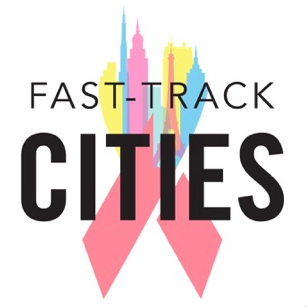
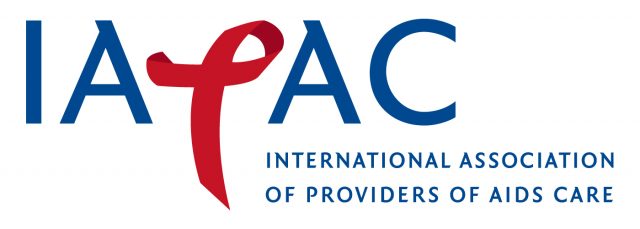




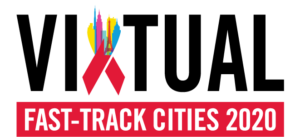
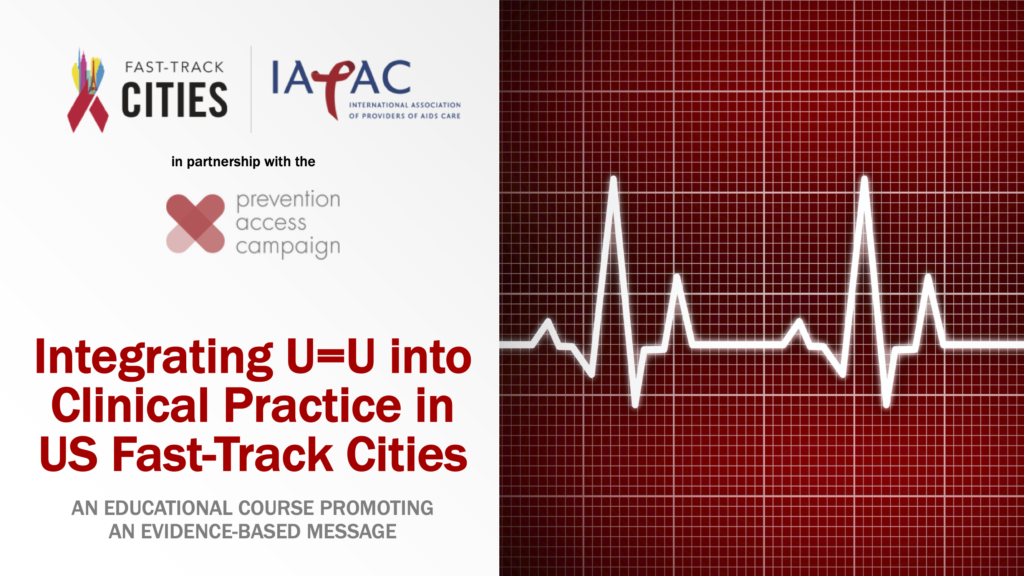
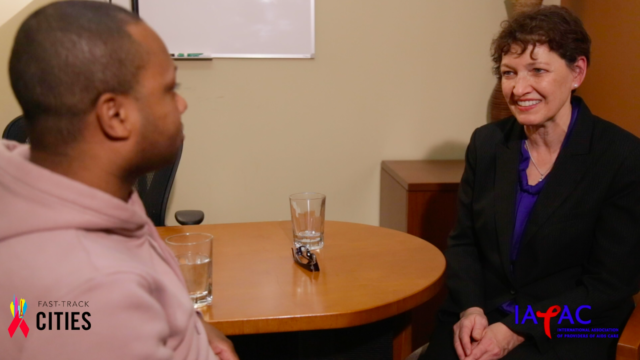
 BASEL, Switzerland (November 6-9, 2019) – Leading voices in the clinical, public health, and community responses to HIV from across Europe joined IAPAC President/CEO Dr. José M. Zuniga in a symposium panel discussion at the start of the
BASEL, Switzerland (November 6-9, 2019) – Leading voices in the clinical, public health, and community responses to HIV from across Europe joined IAPAC President/CEO Dr. José M. Zuniga in a symposium panel discussion at the start of the  Nurses from around the world convened September 21-22, 2019, in Rome for
Nurses from around the world convened September 21-22, 2019, in Rome for 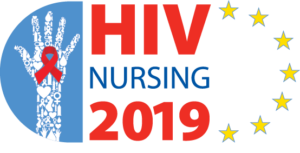
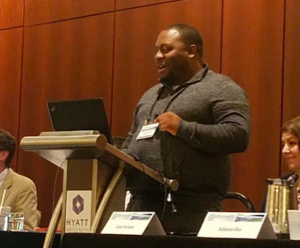
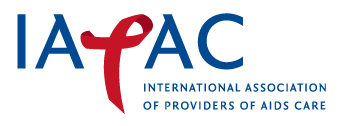
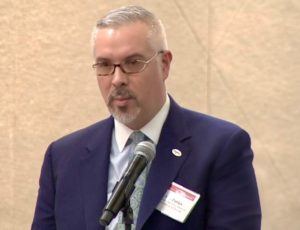 My name is Dr. José Zuniga, and I am the President/CEO of the International Association of Providers of AIDS Care, or IAPAC. In 2014, we partnered with UNAIDS and other institutions to launch the global Fast-Track Cities initiative. Last month, Columbia, South Carolina, became the 23rd US municipality to become a Fast-Track City, joining more than 270 other cities and municipalities worldwide.
My name is Dr. José Zuniga, and I am the President/CEO of the International Association of Providers of AIDS Care, or IAPAC. In 2014, we partnered with UNAIDS and other institutions to launch the global Fast-Track Cities initiative. Last month, Columbia, South Carolina, became the 23rd US municipality to become a Fast-Track City, joining more than 270 other cities and municipalities worldwide.
